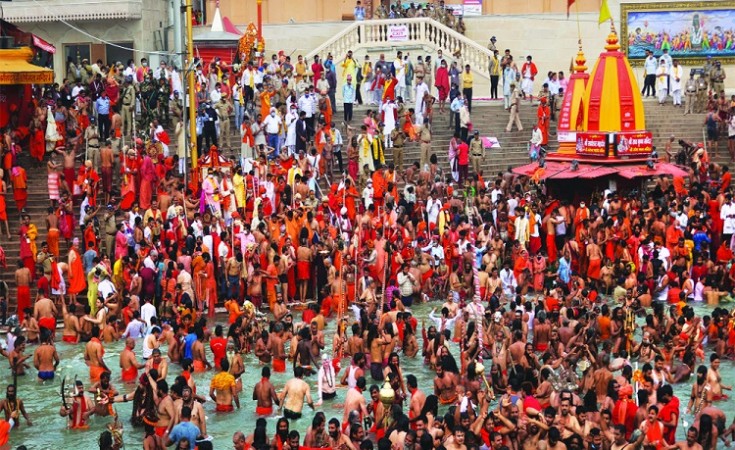
Ganga Dussehra, also known as Gangavataran, is a significant Hindu festival that commemorates the descent of the sacred river Ganga (Ganges) on Earth. It is celebrated on the tenth day (Dashami) of the waxing moon (Shukla Paksha) in the Hindu month of Jyeshtha, which usually falls in late May or early June. This year 2023, the festival falls on May 30. This auspicious day holds great religious and cultural importance for millions of devotees who revere the Ganges as a divine entity. Let us delve into the origins, rituals, and significance of Ganga Dussehra.
The Legend of Ganga's Descent: According to Hindu mythology, the story of Ganga's descent can be traced back to ancient times. King Bhagiratha, an ancestor of Lord Rama, embarked on a rigorous penance to seek redemption for his ancestors' sins. His prayers moved Lord Brahma, who granted his wish to bring the celestial river Ganga down to Earth. However, Bhagiratha knew that Ganga's powerful flow could cause devastation, so he prayed to Lord Shiva to bear the force of her descent.
On Ganga Dussehra, it is believed that the holy river Ganga descended from the heavens onto Earth, thus purifying all who come into contact with her sacred waters. This divine event is celebrated with immense fervor and devotion in various parts of India, especially along the banks of the Ganges.
Rituals and Celebrations: Devotees wake up early and make their way to the riverbanks to take a holy dip in the Ganges. They believe that the water of the Ganges possesses the power to cleanse their sins and grant them spiritual purification.
Worship and Offerings: Elaborate puja (worship) ceremonies are performed at riverbanks and in temples dedicated to the Ganges. Devotees offer flowers, incense, lamps, and other symbolic items to express their reverence and seek blessings.
Aarti and Devotional Songs: In the evening, grand aarti (a ritual of worship with lighted lamps) takes place along the riverbanks. Devotees light oil lamps and offer them to the river, accompanied by melodious bhajans (devotional songs) praising the glory of the Ganges.
Processions and Festivities: Processions, called Ganga Aarti Yatras, are organized in several cities along the Ganges. Devotees carry idols or pictures of Goddess Ganga in beautifully decorated palanquins, accompanied by music, dance, and enthusiastic crowds.
The Ganges is considered the holiest of rivers in Hinduism, believed to possess the power to absolve one's sins and grant liberation (moksha). Ganga Dussehra celebrates the descent of this divine river, emphasizing the significance of water as a purifying element in Hindu rituals.
Apart from its religious importance, the festival also highlights the ecological significance of the Ganges. Efforts are made to raise awareness about the conservation and cleanliness of the river, inspiring people to protect and preserve this invaluable natural resource.
Ganga Dussehra, observed on the tenth day of the waxing moon in Jyeshtha, is a sacred festival that honors the descent of the holy river Ganga on Earth. It is a time of immense devotion and reverence, as millions of devotees gather along the riverbanks to seek spiritual purification and offer their prayers. The festival also serves as a reminder of the need to protect and preserve the Ganges, promoting ecological consciousness among the masses.